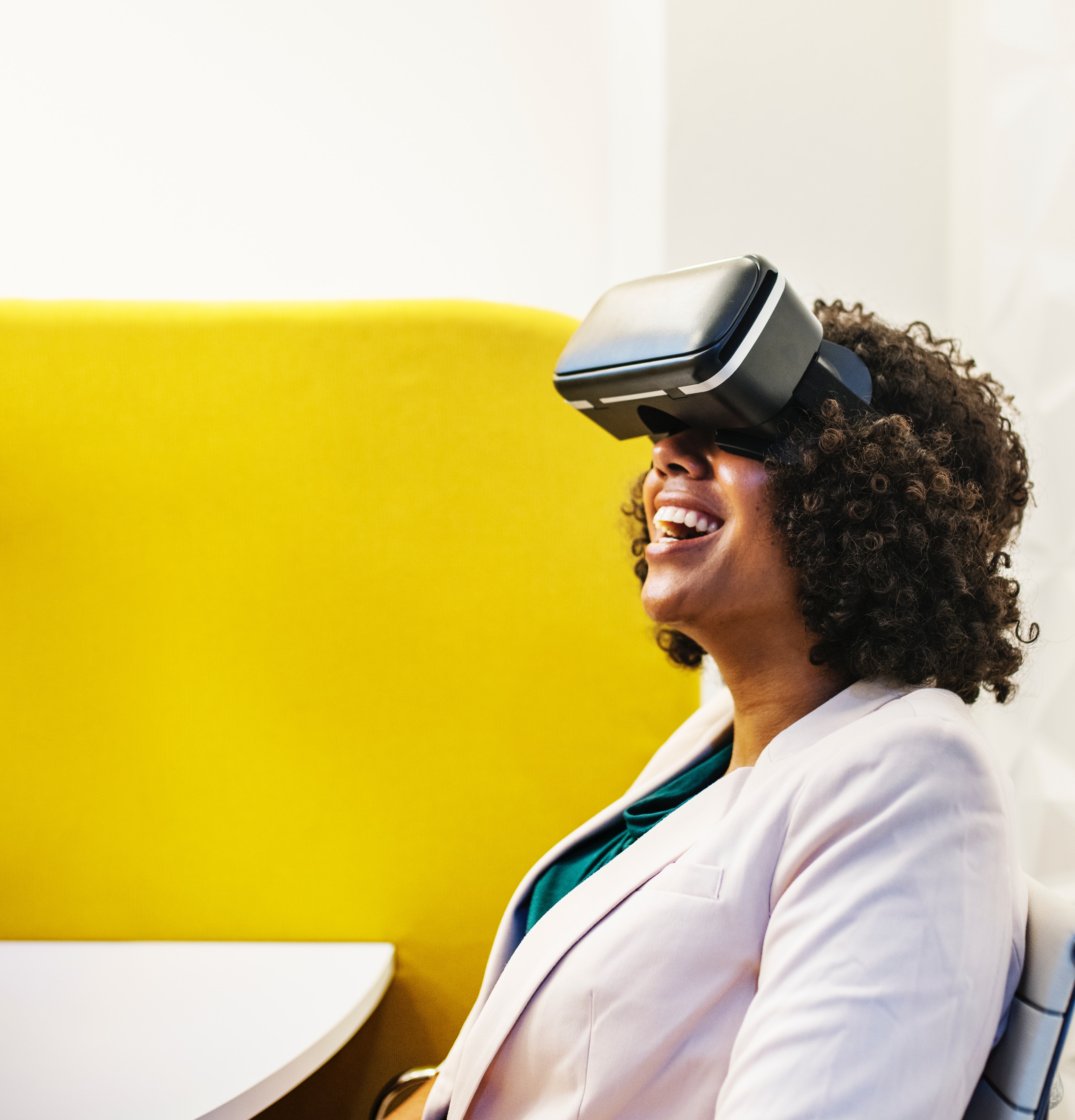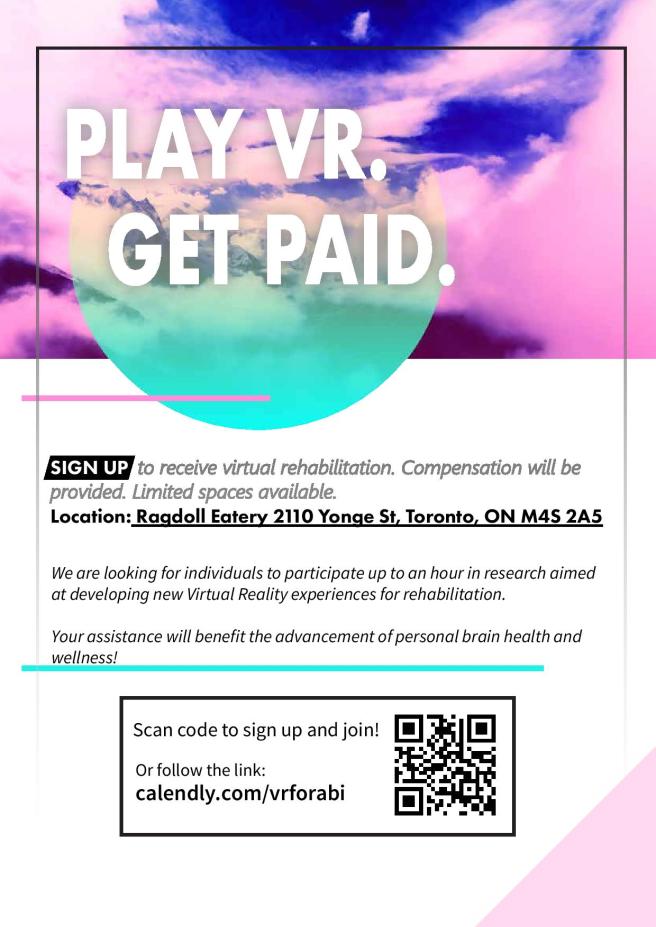BY: ALISON
The worlds of brain injury rehabilitation and Virtual reality (VR) are coming closer together.
The technology for VR is advancing very quickly, including multi-player games and the development of devices that involve your entire body to create highly realistic virtual experiences (e.g. driving or flight simulations). Toronto has a VR arcade, Ctrl V, that uses top of the line equipment and offers over 52 different VR games.
Ocutherapy is a new company that is developing VR games tailored for people with brain injuries. The hope is that the games will help brain injury survivors practice certain skills including memory, speed, fluid cognitive abilities and coordination, etc.

The software will track your performance over time. The Ocutherapy games will have simple 3-D graphics and will require minimal VR equipment. The games will be compatible with most of the industry leading VR hardware (head sets and controllers). If you own a Chromecast device and have access to WiFi, then you could display what the player is seeing in the headset onto a WiFi enabled TV or computer monitor, so someone else could watch and help the player figure out the game as needed. Ocutherapy is still in development and is not yet available for sale. Although you will eventually be able to buy the system for yourself (likely before the end of 2019), the company is also working on getting their product into some occupational and physiotherapy offices.
Much like in real life, when you’re playing, you can only see the part of the virtual environment that’s directly infront of you. So, if you’re standing in the middle of a room in the game, you have to turn your head (or your entire body) to see the rest of the room. The controller can sense your spatial presence and hand and arm motions and allows you to interact with the VR environment. You click on buttons to select options, move forward, and pick things up and move them around, etc.
VR has never been formally used as a rehabilitation aid before, so they can’t predict if it will be right for your condition.
Here’s an example of what it’s like to play one of Ocutherapy’s task-oriented games. You start off feeling like you’re standing in the middle of a room. Using the controller, you navigate through hallways and stairs to enter a kitchen. Then you ‘stand’ in front of a counter to make sandwiches based on specific instructions (e.g. four four slices of cheese, three slices of tomato and three slices of lettuce). Part of the challenge is in having to remember the details of the instructions as you complete the task. You use the controller to simulate picking up a knife and slicing cheese before picking up the cheese slices and placing them on a slice of bread. Then you finish making the sandwich by adding the remaining ingredients and another slice of bread.
If you are interested in trying the games for yourself, Ocutherapy will be offering a demonstration at the BIST Community Meeting on August 28, 2019. Find out more, HERE
I tried Ocutherapy for one session and here are my personal thoughts about the experience (note: I am not a health care professional):
- The advantages of using VR include:
- A fun and interesting experience
- Something new to try
- The opportunity to learn how to use new technology
- The ability to practice certain skills in the comfort of your own home
- Fewer distractions while you’re completing the virtual tasks
- The headset and controller can be used to play VR games produced by other companies as well
- Disadvantages of using VR include:
- The head set felt a little bit heavy for me, so I wouldn’t recommend VR if you have whiplash or if neck strain could exacerbate your symptoms
- If you are sensitive to light and electronic devices, then VR will be difficult to use, because the screen is electronic and close to your eyes
- VR can make even perfectly healthy people feel nauseous. I felt nauseous after just a few minutes of playing Ocutherapy, but my most recent brain injury was less than four months prior to that
- Using VR as a rehabilitation aid for brain injuries is a brand new approach, so there isn’t enough research available to know if it will actually improve the skills in real-life application.
The more advanced the technology, the more real the simulation feels. At a minimum, you must wear a headset and use a hand-held controller. The headset is designed to block your peripheral vision so the only thing that you can see is a small screen placed a few inches away from your eyes.
Learn more about Occutherapy at our August Community Meeting
August 28, 2019, 6-8 pm
Find out more, HERE
Sign up for the VR Study, HERE
‘Mind Yourself with Alison’ is a collection of self-help tips, research, and personal experiences dedicated to helping people thrive after brain injury (or other health problems). Check out Alison’s other BIST Blog articles Women and Brain Injury: What you need to know and How to be a Good Friend to a Survivor.





